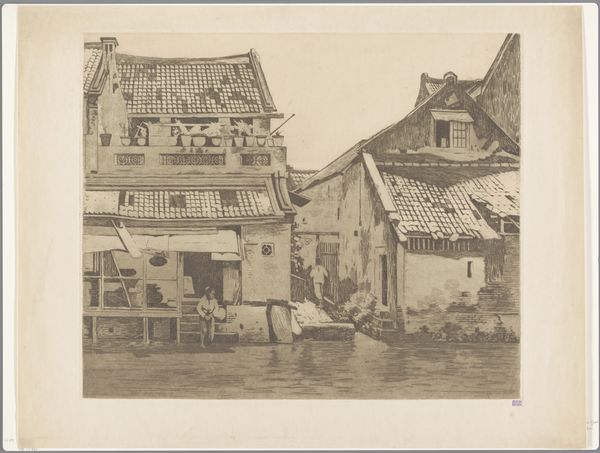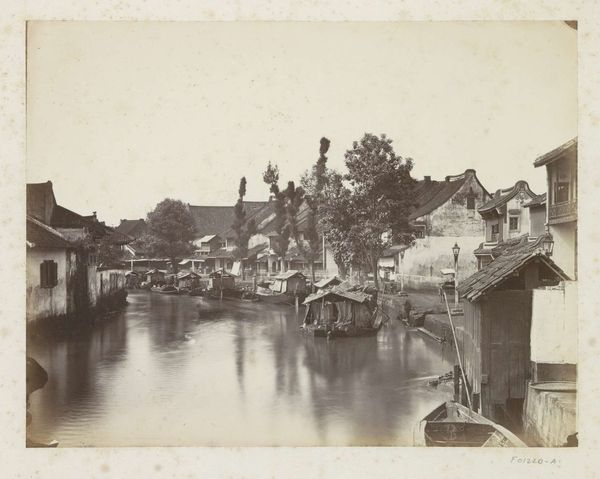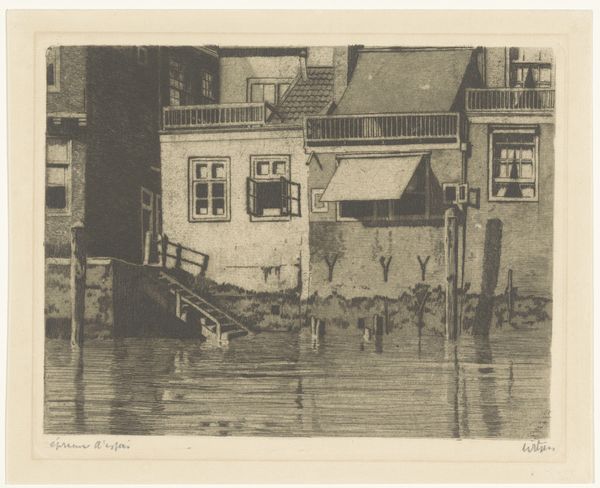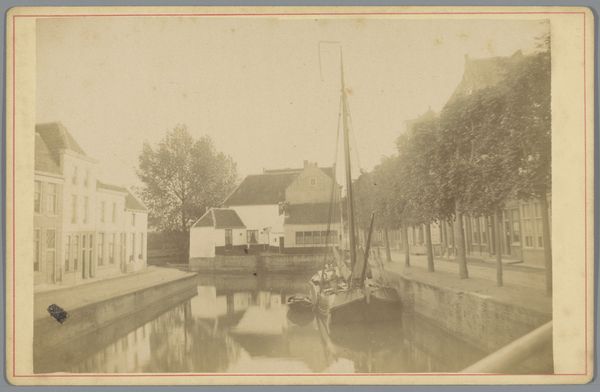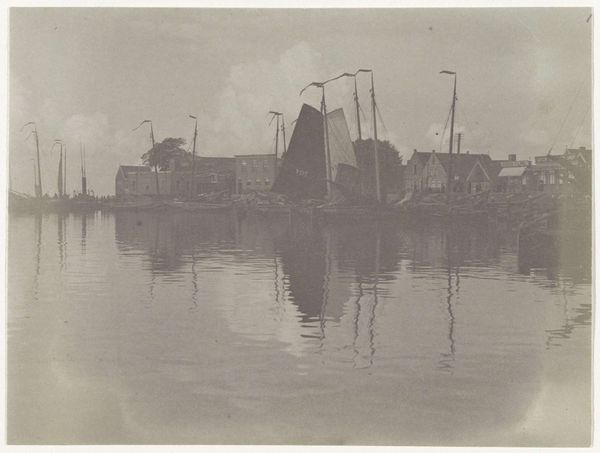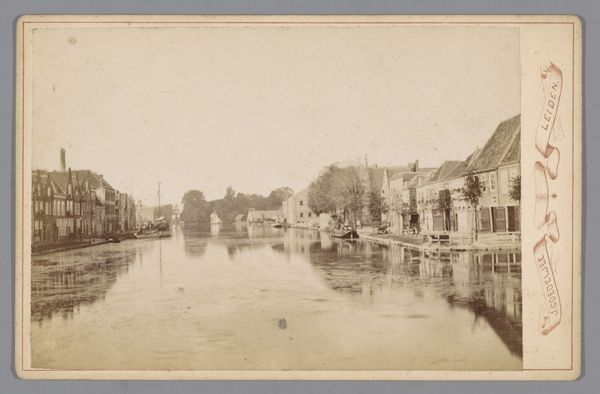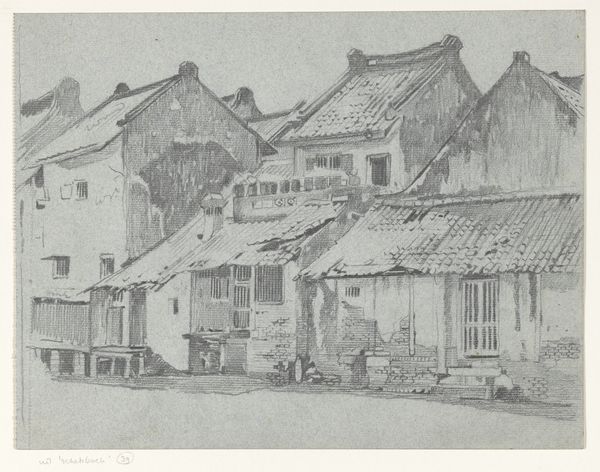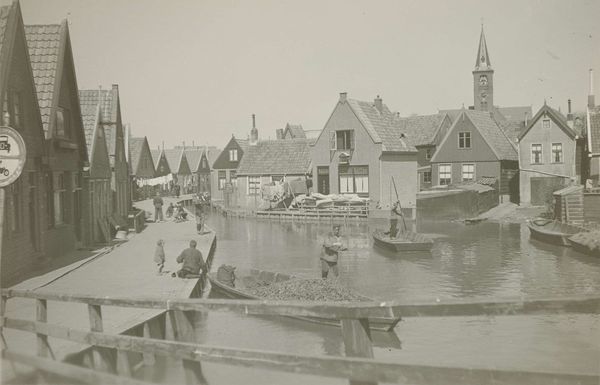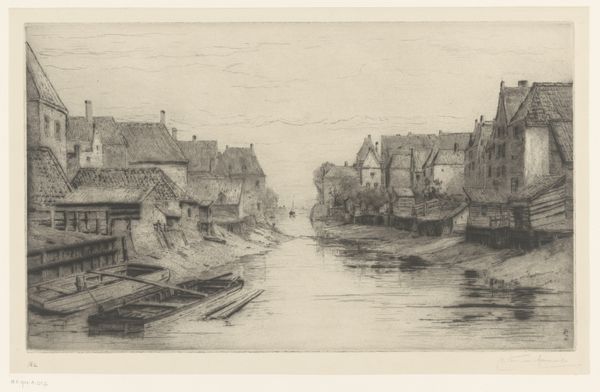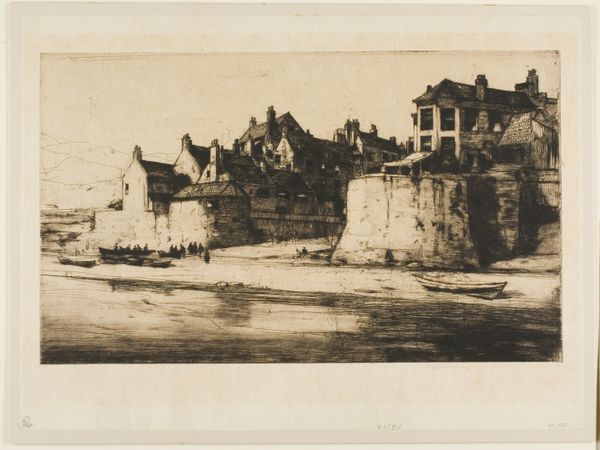
drawing, print, etching
#
drawing
# print
#
etching
#
asian-art
#
landscape
#
line
#
cityscape
Dimensions: height 502 mm, width 599 mm
Copyright: Rijks Museum: Open Domain
Editor: Here we have Willem Witsen's etching from around 1921, "Back Views of Houses on a River in Batavia." The detail is remarkable, and I’m struck by how these structures seem to emerge directly from the water. What kind of symbolic weight do you see in these receding facades? Curator: Well, I'm drawn to how Witsen captures the essence of a colonial port city, where the river becomes both a thoroughfare and a boundary. Look closely—the repetitive architectural forms suggest a kind of cultural memory, a continuous echo of Dutch presence in Batavia, now Jakarta. Do you see how the uniformity, punctuated by subtle differences, implies both control and the inevitable localized adaptation? Editor: That's fascinating. I hadn't considered the element of control. Is the river also acting as a connector, reflecting movement and change in addition to colonial order? Curator: Precisely. The water, so prominent in the composition, can be seen as a symbolic conduit, linking cultures and facilitating trade. But look at the details etched by Witsen – the way light plays on the decaying structures suggests transience. Colonial power, like the buildings themselves, is subject to the erosive forces of time and the elements. Notice how even the reflection seems…fragmented, fleeting. What emotions does that evoke in you? Editor: It feels melancholic, hinting at loss but also resilience, maybe? It seems like the river knows more than the buildings reveal, keeping memories both visible and submerged. I really appreciate that insight. Curator: And I find myself reflecting on how Witsen uses the seemingly simple cityscape to embody the complex interplay of power, culture, and memory. An unassuming portrayal, but it’s thick with the passage of time.
Comments
No comments
Be the first to comment and join the conversation on the ultimate creative platform.
